
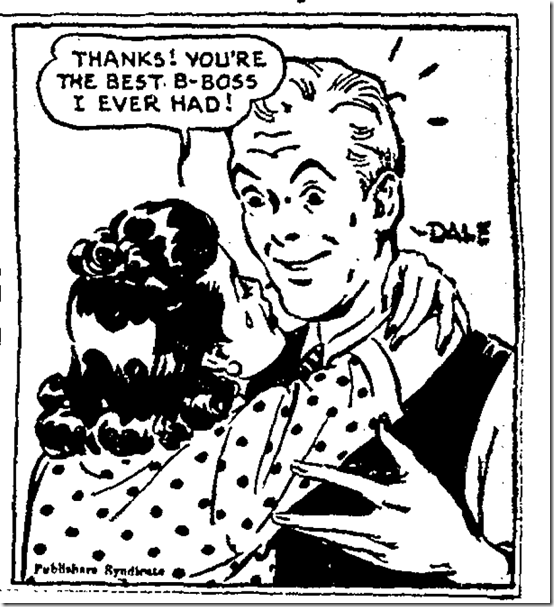
Nov. 5, 1941: Pilot Ralph Virden dies after being trapped in the burning wreckage of his P-38, which lost its tail assembly as he was returning to the Lockheed Air Terminal after a test flight about noon, The Times reported.
Witnesses said the twin-engined, double fuselaged ship was booming westerward at near-maximum speed (unofficially reported to be between 400 and 500 mph) when the duralumin tail assembly “simply floated away.”
Homeowner Jack Jensen was awakened by the crash and tried to free Virden from the burning wreckage but was driven back by flames. The crash occurred during an outdoor luncheon for military officials and 25,000 employees, but they did not observe it, The Times said.
Virden was survived by his wife and son, Ralph Jr., who also worked at Lockheed. Fellow pilots said: “Ralph was the best we had, especially in power dives.”
Tom Treanor, who was killed covering World War II for The Times, says the Forum Theatre on Pico, the Warner Bros. Hollywood and the Roxie in downtown Los Angeles are experimenting with swing shift movies that start at 1:30 a.m.
Jimmie Fidler says: Sam Goldwyn doesn’t know it yet, but his ace cameraman Gregg Toland, an officer in the Naval Reserve, has been notified to stand by for active service.
![]()
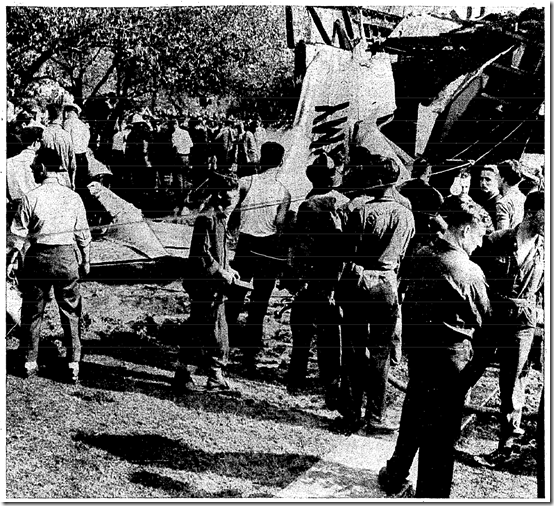
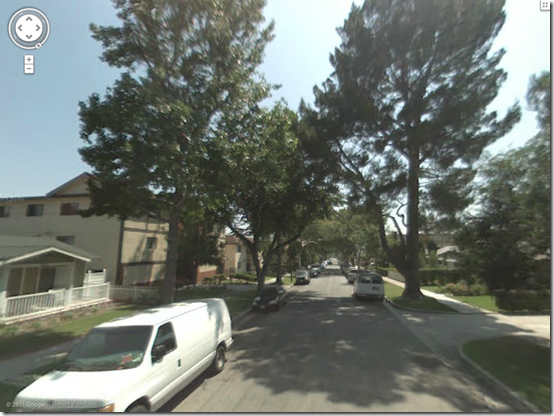
Photo: Elm Street near Glenoaks, via Google’s Street View.
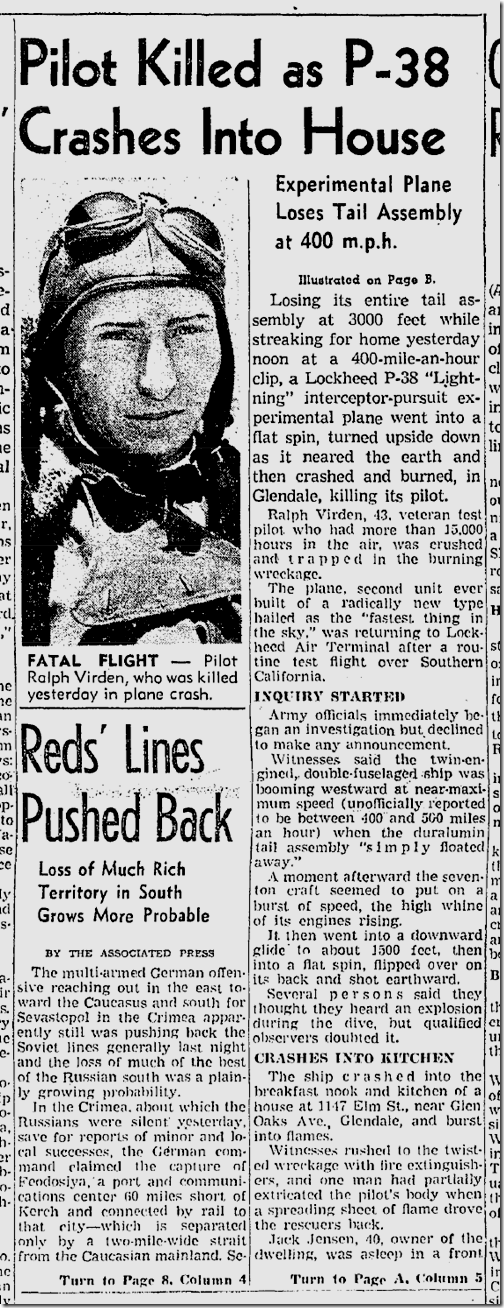
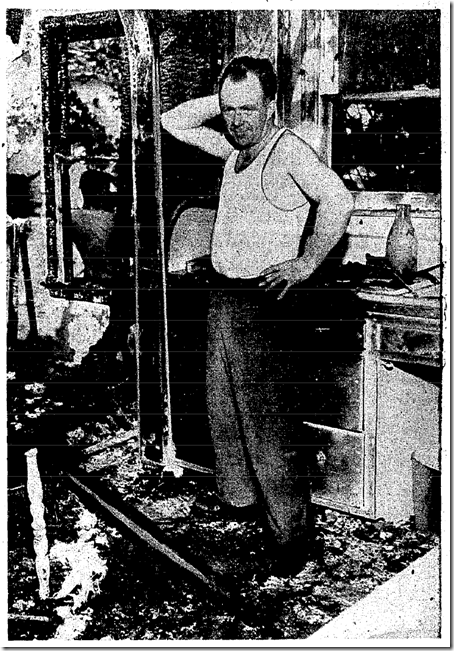




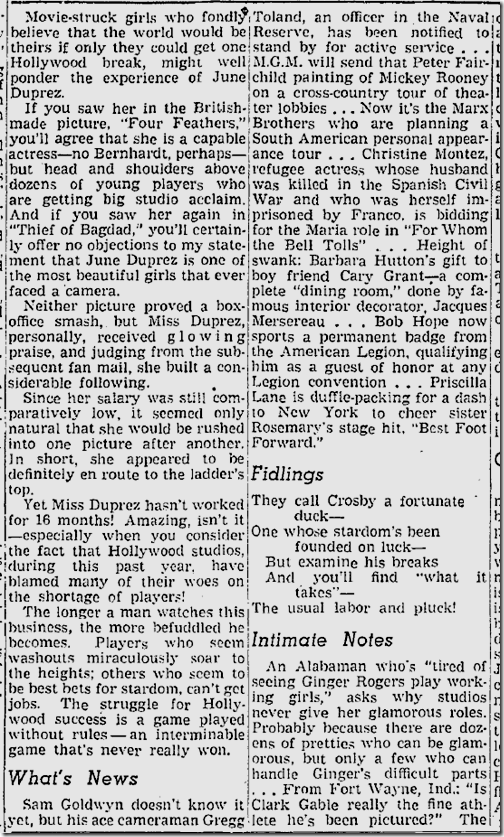



How horrible! We had another crash in Eagle Rock around the same time (war time), but this one crashed into a house in the middle of the night. As far as I know, everyone survived. I thought crashes like this took the house with them but no – it looks like the Elm house survived another 40 years, and the Las Flores house is still there. I can’t imagine what kind of reconstruction you would need after something crashes into your house, but if I were Jenson, I’d move out of the house where I’d seen someone burn to death.
LikeLike
PS I love reading Jimmy Fiddler (And Hedda Hopper, when she shows up) because it gives me the strangest feeling they’re all currently working out there in Hollywood, and all I have to do to see them is take a streetcar trip.
LikeLike
Fascinating story of what was actually a real milestone in aviation history – the attempt to puncture the sound barrier. A 1990 article in Air and Space Magazine described what happened to Virden and his P-38 and sets it in the larger context of the effort which would culminate six years later in Chuck Yeager’s official breaking of the barrier in the X-1. You can read the whole thing, which begins with Virden’s crash, here: http://tinyurl.com/3ddgf8r. We often forget all the people and heartbreak that goes into human progress we take for granted; it’s nice to have Virden remembered.
By the way, thanks for keeping the blog going. It’s always a fascinating, daily read for me.
LikeLike
@Steve: As you probably know, there was tremendous activity in the aerospace industry in Southern California in this period. (In fact, we’re still cleaning up all the solvents and hazardous substances left over from World War II). And there were some spectacular accidents. I recall reading about one (I’m 90% certain it was a P-38) in which a pilot bailed out after setting his plane to crash in the ocean. Instead, the plane made a low, sweeping circle over the water and came back heading straight for the beach, where it crashed. I believe some beachgoers were injured but I don’t recall all the details now. I’ll see if I can find the story. I’m thinking it was 1943 or 44 but that’s a guess.
LikeLike
That WAS fascinating, Steve, thanks!
LikeLike
Thanks, CatM, glad you enjoyed the read!
Larry, I guess you must be thinking of this horrific crash:
“Sunday on June 27, 1943 as the Barrega and Silva families drove their seven children from their homes in Garden Grove to enjoy a nice picnic on our beach. Other families were relaxing with their children and trying to forget about the war. The crowd was watching as a formation of Lockheed Lightning P-38 military planes was practicing diving and shooting at a drone towed by a fifth plane at 4,000 feet.
“Suddenly, one of the planes lurched wildly out of formation and smoke began coming from one of the engines. As children watched, pilot G.R. Fair bailed out and floated to Earth in his chute. Fair’s now-pilotless plane started out to sea but turned and began to circle back toward shore. What happened next can only be described as “Hell on Earth.”
“The P-38 crashed near the water’s edge about a half-mile from the pier in a blinding flash that sprayed burning gasoline over a wide area onto the helpless adults and young children. Mothers were burning their hands while frantically trying to beat out flames on their children’s gasoline-soaked bathing suits.” …
Huntington Beach Independent (full article here: http://tinyurl.com/85gkfam)
Truly awful. But training accidents during the war apparently occurred at a mind-numbing rate. This page lists accidents for June 1927, including the aforementioned Huntington Beach crash (look for the pilot’s name, Gene R. Fair); the list is very , very long. And that was just one month of the war: http://tinyurl.com/6ugn7xe
I never really knew just how deadly the homefront actually could be …
LikeLike
@Steve: Yes, that’s the one. Incredible, isn’t it? Lots of planes went down during training and testing. Not just fighters but bombers and trainers.
LikeLike
Can’t thank you enough for putting these articles together and posting them. Ralph Virden was my great uncle, and I’ve long been fascinated with his flying history and accomplishments. There were bits and pieces of information about this crash, and the Smithsonian Air & Space Magazine article which talks about it, but I’ve never seen some of this material. Thanks again.
LikeLike
Thanks for reading!
LikeLike